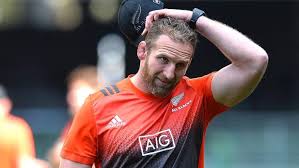
For decades, Kiwis have got used to the idea that wintertime means rugby. Well, we better start getting used to the idea of wintertime meaning soccer, because soon we’re going to have a lot more awareness about the effects of repetitive head injury than we do now, and when we do, there are going to be a lot of shrieking violets trying to get the game they play in heaven banned.
Rugby is popular in New Zealand for two major reasons. The first is that it’s fun as all hell both to play and to watch, the second is that rugby has been an important part of the masonry that cemented white people and Maoris together into a functioning modern culture. For over a century, rugby fields have been the places where Kiwis learned to set aside their racial and class differences and unite of their own free will towards a common goal.
There has always been an undercurrent of concerned mothers, however, who didn’t let their kids play rugby out of fear of head or brain injury. It’s an entirely legitimate concern – rugby is a collision sport, after all, and it’s evident from watching ten minutes of an All Blacks match that not even the best tackling technique in the world is a guarantee that one can avoid head injury entirely.
Perhaps most worryingly of all, even the best of the best rugby players in New Zealand are aware of the risks they are taking. Kieran Read has said that he intends to encourage his children into cricket on the grounds that rugby is too dangerous, and Richie McCaw said, post-retirement, that “I don’t miss getting smashed.”
The question is this: what risk of permanent brain injury is considered too much, given the positive physical and social benefits that come from the game? Because if that limit is exceeded, it may be that the responsible thing to do, from the Government’s perspective, is to ban it. After all, New Zealand schools banned Bull Rush with very little sentiment because of head injury concerns, so why couldn’t they do the same for rugby?
Recent studies on NFL players suggest that the incidence rate of brain damage in adult professional collision sports is many times higher than was previously suspected. It seems that, as brain scanning technology continues to improve, we are gathering a more refined appreciation of how vulnerable the brain really is to repeated blunt force trauma.
Rugby is different to American football, of course, because in rugby the tackle is made with the shoulder, whereas in American football tackles are often made with the head in a manner akin to a charging rhinoceros. But that’s merely a difference in degree, not in category. Rugby is still a sport based around putting the ball carrier on the ground through physical force, and this means the risk of head injury can only be minimised, never eliminated.
Already we’ve been able to observe a change in the culture of the sport in recent years. Avoiding head injuries is sometimes prioritised to an absurd degree, highlighted by the incident in the recent Lions tour when a Lions player leapt into the air to catch a loopy pass from halfback Conor Murray, was tackled before he hit the ground, and then was awarded a crucial penalty for having been taken out in the air.
This looks set to get even more extreme. It won’t be long until a professional match has to be stopped part way through because (for example) two tighthead props on one team have both failed head injury assessments.
This column has previously pointed out that the Government never gives rights back to the peasantry; they always take one new right away for every one they give back. Recent discussions about whether to change the cycle helmet laws have been centred around the idea that forcing people to wear a helmet discourages them from cycling. One can be certain that if we get our rights to cycle without a helmet back, pressure will begin to build to have them taken away somewhere else.
We would never argue for the game of rugby union to be banned, at any level. We don’t even support the softening of the game with the repeated TMO checks for suspected head-high tackles. But there are some wowsers and control freaks out there, and we can confidently state that they would happily ban rugby if they thought of the children long enough. It pays to stay one step ahead of them.
*
If you enjoyed reading this essay, you can get a compilation of the Best VJMP Essays and Articles of 2017 from Amazon for Kindle or Amazon for CreateSpace (for international readers), or TradeMe (for Kiwis).



